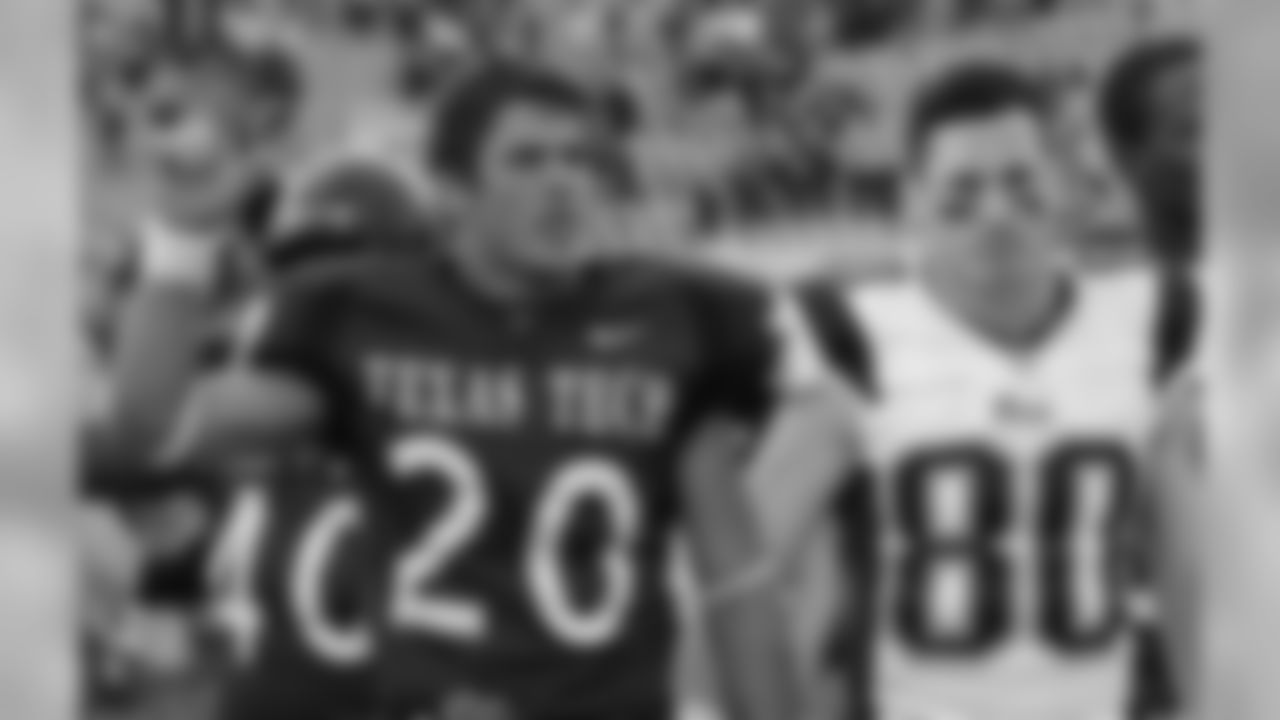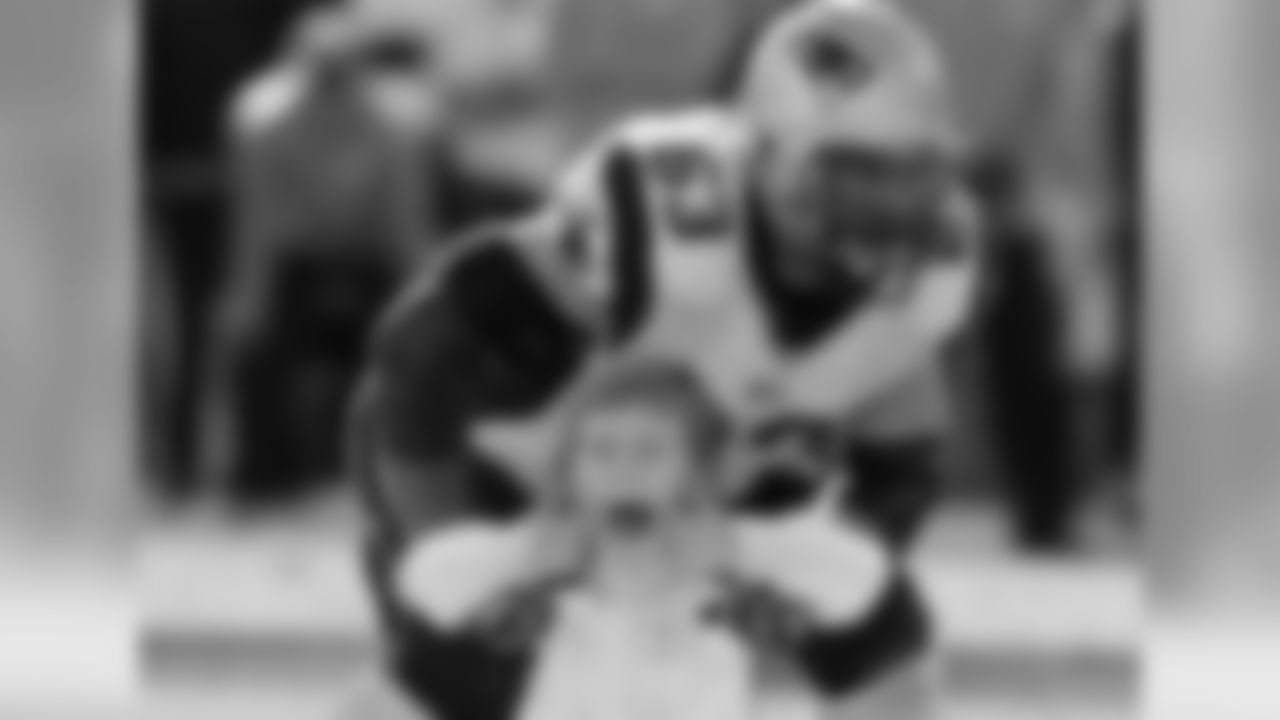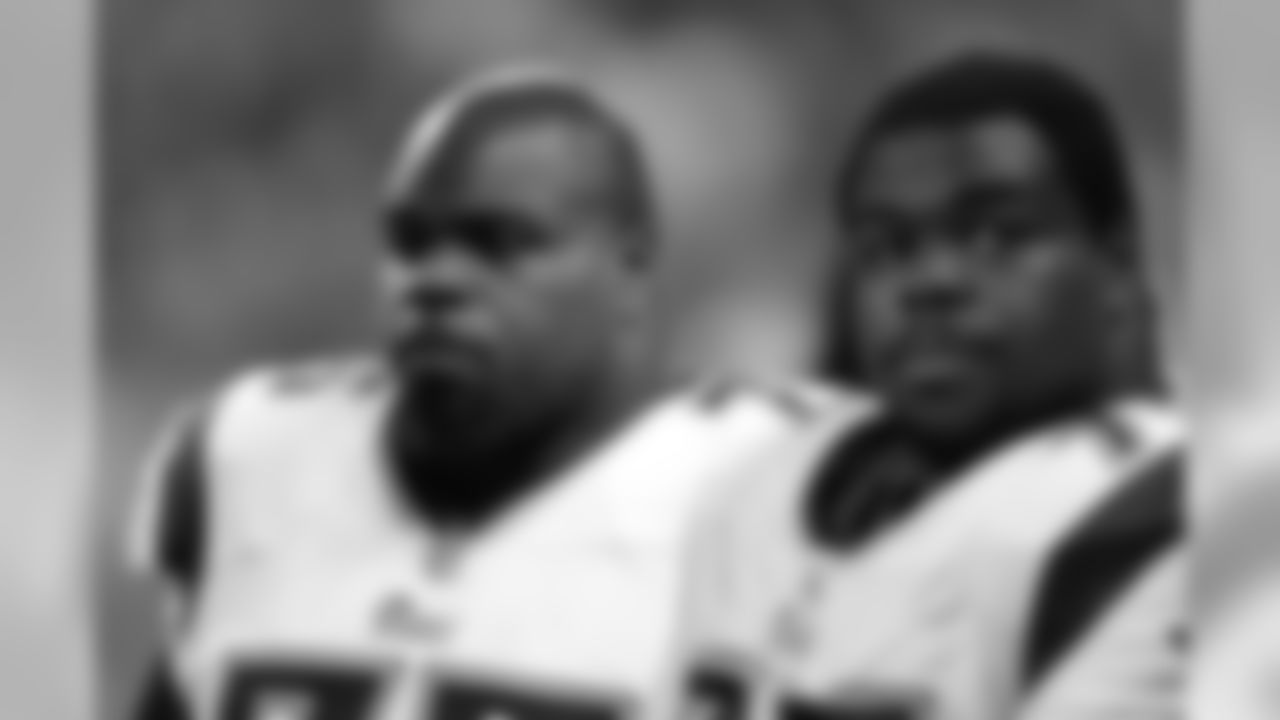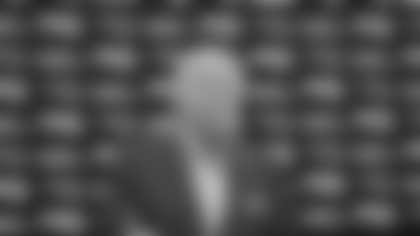BB: It's always good to see the team out on the field for the first time. This is really the culmination of a lot of work in the offseason; of team building, putting together the roster, whether it be pro players, college players, various other ways of forming a roster, coaching staff and just getting ready to go here. We have a long haul ahead of us. We have a lot of big challenges ahead, but we'll just take it day by day and see if we can just keep putting one foot in front of the other, string some good practices, good days together, keep improving here as a football team. We've moved into a new office setup, we kind of did it partially in the spring and then finished that off here this past month. So, kind of new coaches' offices, new meeting rooms, new training facility, upgraded the weight room – so we made a lot of capital improvements here. My 15th year with the team now, kind of reflect on where we were in 2000, at Bryant College and the old stadium and so forth. Robert [Kraft] has made a huge commitment in many ways, financially and otherwise, given us great support, great opportunity to field a competitive team. With some of our new facilities in place and kind of the start of a new year here, we're excited to get going. Like I said, it's a long way to go. We're not going to change anything in one day or one practice or one drill but I think the accumulation of all the things we do here over the next 10 days or so prior to going to Washington will hopefully give us a good foundation into the season and into two competitive weeks against Washington and Philadelphia and build our team toward opening day and the 16-game regular season schedule. I'm looking forward to that opportunity and the big challenges that are ahead. It's good to be out on the field; good to get going.
Q: Do you ever miss the old days at Bryant?
**
BB:** There were a lot of great things about – I think back probably to every training camp that I've been in to the first one at Baltimore to Detroit to the Giants and all the way down the line. Those were different times. Each camp kind of has its own dynamics, its own personality, its own characters if you will, on the team, characteristics. They're all etched in there somewhere. Things were what they were. Certainly we had a lot more practices, a lot more practice time, a lot more Spartan type facilities but that was all relative. I just think overall, if there's one thing I would say there haven't been many good years that I've been a part of that didn't go back to good training camps, good base. I don't think that necessarily ensures that everything is going to go well but I think when things don't go well in camp, that's not a good forecaster for the way it's going to go the rest of the year. I hope we can get off to a good start and have a good, productive camp.
Q: When you started out, there were coaching staffs with like six coaches, now you have three times that.
BB: Well, some staffs do.
Q: What does that say to you about those coaches and those days?
BB: It's interesting. There were a lot less players too. There was a lot less substitution and basically 11 players that were on the field stayed on the field until somebody got hurt. In the early '70s, George Allen started the nickel defense where he would bring in a defensive back for a Will linebacker. It was a one-for-one substitution but all the calls were exactly the same. There were no nickel defenses. It was just a one-for-one substitution of a better pass defender in passing situations for a linebacker. Of course, it's evolved quite a ways since then. I remember one of the first things I did in 1975 was break down the Washington-L.A. Rams game. The Rams used two tight ends, two receivers and one back. It was a revolutionary kind of tactic or personnel group. It created a lot of problems for Washington's defense because it was always a strong side, weak side 3-on-2, 4-on-3 matchup. That personnel group ended up creating a real problem because you were able to get three receivers out to either side after the ball was snapped; defense didn't know what it was. That really struck me, that's one of the first things that [Colts defensive coordinator] Maxie Baughan had me do, was break down that game from the '74 season. It really struck me as to how creative that formation and that personnel group was to causing a defense problems. We worked hard on that that year and of course never saw it. It never really evolved until a couple years later in '76, '77 with I'd say, [Joe] Gibbs made it more popular in the '80s. It was a lot different back then. There were 11 players on each side of the ball; you didn't have all the situational substitutions. You had seven linemen, two tight ends, four backs, four receivers and defensively you had whatever it was, six defensive linemen or seven defensive linemen maybe, six linebackers and seven DBs. A lot of times you had skill guys doing the return game and that was right in the period where there were some punters and kickers that were also position players. Of course, we don't have any of that anymore. Now we don't even have a deep snapper, I don't think in the league that plays another position. That's now specialized. More specialization with players, more coaches, more personnel substitution, more different groupings and certainly the staffs have evolved and player development has evolved as there are more people. Now we have 90 people. It's not one trainer anymore either. You need a lot of people to care for those 90 players so you have bigger training staffs, bigger strength and conditioning staffs, which a lot of teams didn't even have them back in '75. I'd say maybe half the teams – I think Coach [Chuck] Noll started it in Pittsburgh. Usually it was a coach who had another position was the strength coach. In a lot of cases, a coach who had other positions coached the special teams or maybe the offense coached the return game and the defense coached the coverage game or something like that. Staffs have expanded and I'd say back in those games too, the head coaches usually were very involved in the coaching, where they actually coached a position as well as being the head coach, which was also very common in college. That's kind of the way I grew up seeing it – whether it was at Navy or as a player. The head coach coached a position and was actually, I don't want to say a position coach but was a position coach. Yes, a lot has changed in 40 years.
Q: Do you miss any of that about coaching?
BB: Well, that's the good thing about being the head coach. You can coach whoever you want; you're not locked into one position. If I feel like coaching somebody, I can go over there and coach them. That's nice. I enjoy that, I really do. If I want to meet with a group of players or an individual player, I can go over film with them or go over film with a group, that type of thing, as a head coach you can do that. That's kind of a benefit to it.
Q: In preparation for the season, when you look at last year and notice trends – I'll use the Wildcat as an example. If you saw a team start something and do it successfully and you weren't going to play them this season, do you still set aside time and say, 'This might be something that takes off'?
BB: Yeah, I think those are the kind of things you need to be aware of. Right, you go back to – just take the whole progression of it, whether it was teams going to two tight ends, teams going to three receivers, the run-and-shoot offense that came in in the mid-'80s and you see those. How far is it going to spread? The West Coast offense. You look at the coaches on other staffs, the teams you're going to play and you see somebody on that staff that looks like they're going to be in an influential position with that team, they would bring some of their ideas to that system, it's smart in the offseason to kind of look at what you might be dealing with there. Right, whether it's the Wildcat, the run-and-shoot, the ride to side zone option – every team in our division runs that now. Four years ago we weren't even talking about it. Would any of our other opponents do it? Sure they would. That was the type of thing that you have to, sometimes it grows legs or it starts to spread throughout the league, which we all know is a bit of a copycat league. So, absolutely. But I think you have to try to calculate it. You don't want to waste a lot of time working on something you're not going to see. But at the same time you want to be prepared for those type of things. Certainly the option offense in the NFL and the no-huddle offense in the last five years have taken a lot more prominence than what they did back in 2007, '08, '09.
**
Q:** How closely will you be watching Rob Gronkowski today and what do you expect to see out of him?
BB: I don't know. We evaluate every player every day. Rob has been out there. We'll do what we've been doing with him the last two days and what we always do.
Q: How did conditioning tests go yesterday? Is everyone here?
BB: Everybody that's under contract is here?
Q: How did conditioning tests go?
BB: As a total team, I think there are some players that are in different stages. Some guys are still working through some injury situations, other guys are – I would say for the most part, the guys that are healthy are in good condition and they seem to be ready to go. But we'll see. There's a big difference between running around a track and playing football. That's what training camp is for. Part of training camp is to test the players' endurance and staying power, day after day, grinding through it. I think probably anybody in this league, any player in this league could go out and do a few good things, have a good day or two. If they can't do that, I don't know why they're in the league. But the guys that can do it day after day, the guys that can be consistent, the guys that continue to improve and handle the volume of things they have to handle from a scheme standpoint, communication standpoint, as well as physically, those are the players that end up playing in this league. I think this is a long process. I think it would be a big mistake to try to evaluate players based on one play, one period, one day. We have opportunity to look at a player over a length of time and that's what we're going to do. That's really the measuring stick, not, 'He made one good play' or 'He had a couple plays in practice today.' I mean that's great. But I think just about every player in the league is capable of that.
Q: Is it a lot harder for you with camp the way it is now with fewer practices and preseason games in terms of evaluating players, especially young players?
BB: Yeah, sure. You get less looks. But it's a level field. We're not practicing any less than anybody else is. When I was with the Giants, we had, I remember going into, that was only four preseason games, we were in the 50s, in terms of practices prior to the first regular season game. Fifty whatever it was, two, three, four, however the year fell, somewhere in that area. We're about half that now, less than half that now I'd say. We're in the low 20s, mid-20s, somewhere in there. Yeah, the opportunities are less. But I'd say the offseason is greater. The spring probably takes on more importance; those 13 days of OTAs and minicamp are again, relative to the '80s, the time I was with the Giants, that's more than we did then. Some of the training camp practices have been shifted to the spring. But the more opportunities you have to look at a player theoretically the better your evaluation should be.
Q: Does that give an edge to veteran players?
BB: Sure. I think it's always been that way though. I think that's always been the case. Look, there are some young players that come into the league that you know are going to be good players and that's an easy decision. There are other young players that come into the league that are below the veteran players because of experience, maybe possibly because of physical development, especially some of the bigger guys, bigger positions. You have to try to estimate where those lines are going to cross, where the younger player is going to pass the veteran player, if he's going to pass him. If the veteran player is going to decline, if the younger player is going to continue to improve or reach his potential and so there's some, obviously guesstimation in that. That's a big part of evaluating your team. A lot of that comes down to, in all honesty, a lot of that comes down to the opportunities that those players have. Players miss time, you get fewer opportunities. If you're always seeing them against the same guy, they might be good on that matchup or they might not be good on that matchup, but how they do against other matchups and other players, not just the one or two that they're facing on a daily basis on your team, so preseason games, preseason scrimmages, that's part of the evaluation too. I think it's important to know who the player is competing against. A guy looks good against somebody who is really not an NFL player then that's good but that's not really the true evaluation. Eventually you want to see NFL players play against NFL players.
**
Just because...we had a little fun with Photoshop and present to you some Patriots blood with their younger selves.










Q:** How has Darrelle Revis looked so far?
BB: He's been here a few hours.
Q: Since you acquired him.
BB: Revis has been fine. He's worked hard; smart guy. I've been impressed with him. Very professional. Has a good understanding of the game, he's a smart player and he's had a real good focus and instinct. He's a smart player scheme-wise but he knows how to play. He's a very instinctive player.
Q: You've watched him from afar, but now that you have him in your camp, has that changed your opinion of him as a player?
BB: Just on a personal level, I never had a personal relationship with him so I've enjoyed that part of it. I'd say as a player, he played well at Tampa, he played well at the Jets and then we saw him in the Pro Bowl. Now we've seen him ourselves for 13 practices and the time in the spring. But again, it's a new year, he's in a new system so we'll see how it all plays out but I'm glad we have him on our team. I look forward to working with him more.








































